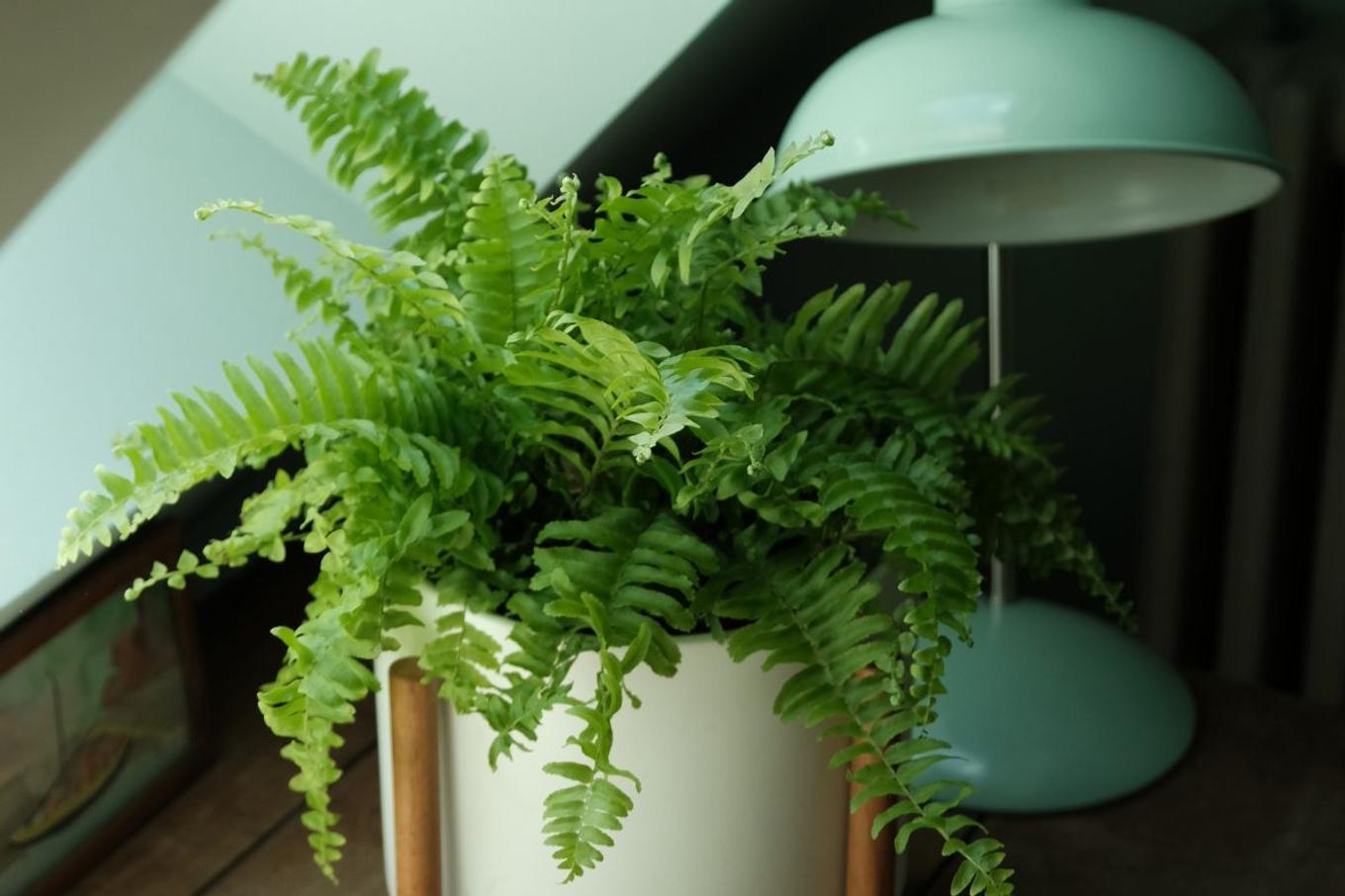Boston Fern Care Guide

Lush, voluminous, and full of movement, the Boston Fern (Nephrolepis exaltata) is a timeless favorite for homes and shaded patios. With its cascading, feather-like fronds, it brings softness and texture to any space. Boston Ferns are also known for their air-purifying qualities and love of humidity, making them especially at home in bathrooms, kitchens, or cozy shaded corners. Keep reading to learn all about this classic houseplant and tips for helping it thrive.
Simple Care Instructions for the Boston Fern
Light Requirements
Boston Ferns thrive in bright, indirect light or dappled shade. They naturally grow under forest canopies, so they prefer filtered sunlight rather than strong, direct rays.
The Boston Fern may also adjust to lower light conditions, but will grow more slowly over time.
Watering Needs
Keep the soil consistently moist but never soggy. Boston Ferns dislike drying out completely—brown, crispy fronds are often a sign they’ve gone too dry.
Water thoroughly when the top inch feels slightly dry. Mist the fronds regularly or use a humidifier if your space is especially dry.
Humidity and Temperature
Boston Ferns crave high humidity—ideally above 50%—and temps between 60–75°F (16–24°C). Dry air from heaters or AC can quickly damage their delicate fronds.
To boost humidity:
- Use a humidifier nearby
- Group with other plants
- Place on a tray of pebbles with water
- Mist daily during dry seasons
Soil and Fertilizing
Use a rich, well-draining potting mix. The soil should retain some moisture without becoming compacted.
Feed once a month during the growing season (spring through early fall) with a balanced liquid fertilizer diluted to half strength. Avoid over-fertilizing, which can lead to leaf burn.
Try our natural indoor plant food for a gentle, effective option.
Common Problems and Troubleshooting Tips
Discolored Leaves – Watering Issues
Symptoms: Yellowing or browning fronds
Cause: Both overwatering and underwatering can cause frond discoloration.
Solution: Check soil moisture—if it’s soggy, let it dry out; if it’s dry, water thoroughly. Maintain consistent watering habits.
Falling Leaves – Underwatering, Low Humidity, or Mineral Buildup
Symptoms: New fronds dropping or leaflets falling off.
Cause: Dry air, insufficient watering, or salt accumulation in the soil.
Solution: Raise humidity levels, adjust your watering schedule, and flush the soil occasionally to remove mineral buildup.
Discolored Spots or Edges – Pest Infestation
Symptoms: Black or brown marks or unusual striping.
Cause: Common pests like spider mites or mealybugs.
Solution: Inspect the plant closely, especially the undersides of fronds. Remove damaged leaves, refresh the soil, and treat with neem oil or insecticidal soap.
Drooping, Stringy Fronds – Insufficient Light
Symptoms: Leggy or weak-looking fronds.
Cause: Low light conditions.
Solution: Move your fern to a location with bright, indirect sunlight for several hours daily.
Stunted Growth – Poor Light, Water, or Nutrition
Symptoms: Little to no new fronds, pale or weak appearance.
Cause: A combination of low light, inconsistent watering, and lack of nutrients.
Solution: Place in bright, indirect light, fertilize monthly in growing season, and water regularly.
Seasonal Care Tips
Spring & Summer:
This is peak growing season. Keep the soil consistently moist, boost humidity, and feed monthly. You can also move your fern outdoors to a shaded patio, just avoid any direct afternoon sun.
Fall & Winter:
Growth slows in cooler months. Reduce watering slightly but never let the soil dry out completely. Keep the plant away from heating vents and continue to mist regularly if indoor air becomes dry.
With proper care, the Boston Fern will reward you with full, flowing fronds and a calming, lush presence that elevates any interior.



